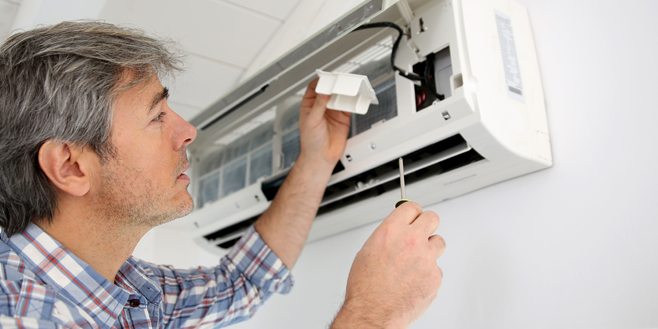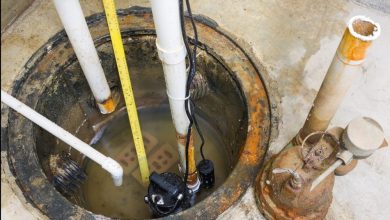Here’s why Your Air Conditioner is not Cooling You and How to fix it

Most electrical appliances need regular servicing to guarantee you optimal performance. A well-maintained air conditioner will not struggle to function when you most need it. More so, air conditioning repair can help bring back the tremendous benefits associated with air conditioners.
You do not have to be an AC professional to diagnose your gadget. If you took the time to learn a few tips, you could fix the challenges yourself. Here are some guidelines to assist you in troubleshooting.
Major Components of an Air Conditioner
There could be a problem in any of the parts below.
- Refrigerant
- Condenser
- Compressor
- Thermostat
- Expansion valve
Understand the Basics of an Air Conditioner
An air conditioner system thrives on the regulation of temperature and pressure. This relationship can change the humidity, air quality, and temperature it’s intended to cool. An AC draws out warm, damp air and replaces it with clean, cooler air.
When you’re using a split system or central air system, the compressor will condense, circulate the refrigerant through the expelling duct, changing its form from gas to liquid. This liquid is then removed through the indoor evaporator set of coils else known as the cooling compartment.
The fans inside then circulate the air indoor to pass across the evaporator fins. These fins are bent to enable them to exchange the heat using the air around.
At this point, the refrigerant converts from liquid to vapor form. This change removes all the heat from the surrounding air. The process of dispersing warm, damp air, the air inside the room is cooled and circulated back to the house.
On the other hand, the condenser, an outdoor unit, turns the refrigerant vapor into liquid, expelling all the heat. Once the refrigerant leaves the evaporator again, it’s cool, under low pressure and gas form. Finally, this gas returns to the condenser to repeat the process. Several repetitions of this process slowly cool down the house by regulating the temperature to the desired degrees. The thermostat senses the programmed degrees causing the process to start again.
Common problems and possible solutions
- The air conditioner is not running
Check to confirm that the fuse is not blown. If it’s intact, then check for a tripped circuit breaker. Restore the circuit at the main switch point in the house.
The other reason could be an overload at the motor. To reset, wait for at least 30 minutes and press the reset button. You can repeat this process severally if it’s necessary.
If the A/C doesn’t run, the switch could be faulty. Replace it if it’s burnt. Also, check that the insulation is intact and that the terminals are not broken.
- Insufficient cooling
If the thermostat is set too high, then your AC will not cool the air inside. Filters and coils get clogged with dust and fluff, thus restricting airflow, slowing down its efficiency. Therefore, you ought to clean the air duct occasionally and replace those that need new ones.
Since the condenser is the outdoor unit of your AC, it’s common to find a plant, a seat, and other such items shielding it. Ensure the condenser isn’t obstructed by anything. The condenser contains the compressor, cooling fins, tubes, and fans.
- Inadequate cooling
Setting the thermostat too high can cause the AC not to cool the air. Additionally, dirty filters and coils need to be cleaned to rid them of any clogging.
At times the fan could be running because the motor, compressors are faulty. If you determine this as the source of the problem, call a professional come to fix the problem.
- The A/C cools, but the fan doesn’t run
It could be an indicator that your control switch is set wrongly. The fan could be clogged, its blades bent, or the motor faulty. Clean it often, and tighten the blades while at it. Straighten any bent blades and replace the motor if you’ve confirmed it’s defective.
- A/C turns on and off repeatedly
As you learnt by now, clogged filters and coils are the significant challenges behind faulty air conditioners. Replace these two components with a new set if the problem persists after cleaning them.
Routine maintenance of the Air Conditioner
- The Filter
If you frequently use your AC, live in a dusty place, or have a pet in the house, the filter front grille will require cleaning every month.
Clean the washable part of the filter with warm soapy water, rinse thoroughly, and leave it to dry completely.
- Evaporator and Condenser Coils
It is safe to vacuum clean the set of coils on these components. Then, remove the outer shell and spray the fins from the inside out to remove any fluff trapped between them. Be warned. Using a pressure washer can spoil the fins, always be gentle.
If the fins are bent, straighten them up with a fin comb that you can buy at an appliance outlet near you. Be gentle because they’re made from a light-gauge aluminum that is easily damaged.
- Drain Port
Accumulation of dirt exerts weight on the drain valves causing them to leak. All the condensed humidity and vapor that cools from the evaporator oil drain through this valve. The fan then blows the moisture across the condenser coil, where the water is dispersed, leaving it dry.
To clean the drain ports, insert a strong, short piece of binding wire with an absorbent material tied around it. Gently turn the wire about in the valve, get it out and rinse it. Repeat this until the cloth comes out clean.
Occasionally, make a mixture of water and a little household bleach and pour it on the outside unit to discourage algae and mold proliferation.
When should you call for professional service?
Make it a habit to have a professional conduct a thorough checkup of your A/C once per year. Doing so saves you money, time, and headaches. If you realize a recurring problem that does not end after doing the repairs, it’s imperative to have an expert’s take on your system.





